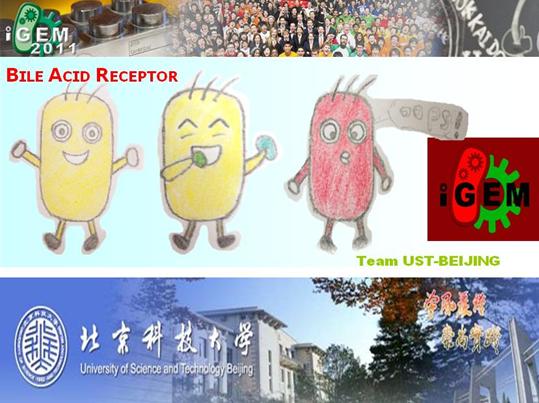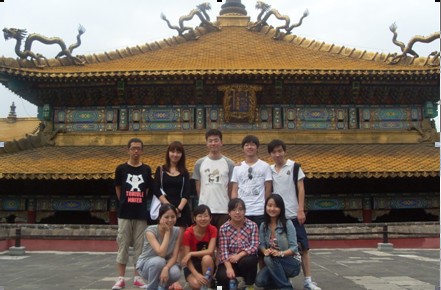Team:UST-Beijing/Project
From 2011.igem.org
(→Overall project) |
Kehanzhong (Talk | contribs) |
||
| Line 22: | Line 22: | ||
|- | |- | ||
| | | | ||
| - | '' | + | ''Gene H-transfer: bile acid receptor in E.coli & proteorhodpsin in mitochindrial inner membrane |
| + | |||
| + | |||
| + | In order to celebrate the power of gene H(orizontal)-transfer between pro- and eukaryotes, we constructed two fusion proteins and tested their function: (1). a synthetic bile acid receptor in E.coli using a mammalian nuclear receptor LXR. As proof-of-principle, the regulatory circuit in symbiotic bacteria could be harmoniously linked to metabolic pathway of their host. Potential application includes in situ synthesis of pharmaceuticals on-demand in the digestive tract. (2) a synthetic light-driven proton pump in human mitocondrial inner membrane using a bacterial proteorhodopsin. Preliminary testing demonstrated cellular sensitivity to light radiation. Application and utility relies on result of in-depth characterization of such system design. '' | ||
|[[Image:UST-Beijing_team.png|right|frame|Your team picture]] | |[[Image:UST-Beijing_team.png|right|frame|Your team picture]] | ||
|- | |- | ||
Revision as of 05:13, 2 September 2011
| You can write a background of your team here. Give us a background of your team, the members, etc. Or tell us more about something of your choosing. | |
|
Gene H-transfer: bile acid receptor in E.coli & proteorhodpsin in mitochindrial inner membrane
| |
| Team Example |
| Home | Team | Official Team Profile | Project | Parts Submitted to the Registry | Modeling | Notebook | Safety | Attributions |
|---|
Contents |
We are engineering a bile acid sensor in E.coli and others
Using lacI DNA-binding domain and LXRbeta ligand-binding domain, we made an artificial bile acid receptor which can regulate expression of target gene within a natural lacI operon. As proof of principle, we
demonstrate that regulation of bacteria gene expression by host eukaryocyte metabolites is achievable using chimeric nuclear receptors. Through directed molecular evolution, a harmonious signal network regulating metabolism of both prokaryocytes and their host eukaryocytes in the digestive tract is feasible.
 "
"

